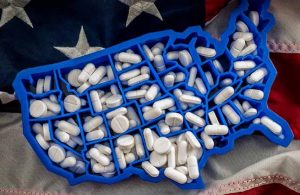How to Fight the Opioid Epidemic
 Death from an accidental opioid overdose has become one of the top five causes of death in recent years. The United States is experiencing an epidemic of opioid addiction. The National Safety Council released a report that says a person born in 2017 has a greater chance of dying from an accidental opioid overdose than from a car crash.
Death from an accidental opioid overdose has become one of the top five causes of death in recent years. The United States is experiencing an epidemic of opioid addiction. The National Safety Council released a report that says a person born in 2017 has a greater chance of dying from an accidental opioid overdose than from a car crash.
Accidental opioid overdose is now one of the top five causes of death behind heart disease, cancer, respiratory disease and suicide. The Centers for Disease Control and Prevention estimates that the total “economic burden” of prescription opioid misuse in this country is $78.5 billion a year, which includes the costs of health care, lost productivity, treatment, and use of the criminal justice system.
The encouraging news is that employers can play an important role in mitigating this crisis by identifying early signs of drug abuse and educating employees about opioid alternatives and treatments. Opioids include oxycodone (OxyContin®), hydrocodone (Vicodin®), codeine and morphine. Heroin, while illegal, is classified as an opioid. Opioids block pain messages sent through the spinal cord to the brain.
While opioids can be extremely effective in reducing pain, they also can be highly addictive. The opioid epidemic began in the late 1990s after professional and consumer groups pushed for increased opioid use for pain management, and pharmaceutical companies assured physicians that prescription opioids were not addictive.
At the same time, the makers of OxyContin (oxycodone) increased their marketing efforts and provided free samples at doctor’s offices. An employee who abuses substances is a danger to themselves and to their families and communities. At work, substance abuse impacts workplace safety, health care costs, productivity, absenteeism and job performance.
As an employer, you can train managers to identify early signs and symptoms of substance use disorders and help employees get treatment. Drug-free workplace programs are cost-effective and can help employees avoid or manage a drug crisis.